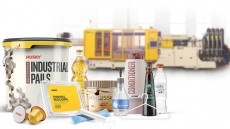Scientists look to salt to reduce acrylamide
reduction, of acrylamide in foods, suggests a new study from the
Slovak Republic.
"The polymerization may represent one of conceivable pathways of acrylamide elimination in a real food matrix," state the researchers in the Journal of Food Science. Acrylamide is a carcinogen that is created when starchy foods are baked, roasted, fried or toasted. It first hit the headlines in 2002, when scientists at the Swedish Food Administration first reported unexpectedly high levels of acrylamide, found to cause cancer in laboratory rats, in carbohydrate-rich foods. Since the Swedish discovery a global effort has been underway to amass data about this chemical. More than 200 research projects have been initiated around the world, and their findings co-ordinated by national governments, the EU and the United Nations. The new research, by scientists at the Slovak University of Technology, looked at the effect of table salt on acrylamide in a simple model system. Acrylamide was added to table salt and heated in the temperature range 50 to 210 degrees Celsius, and compared to pure acrylamide heated under the same conditions. The researchers report that in the presence of table salt the acrylamide content fell by 32 per cent, compared to an 18.4 per cent decrease in the acrylamide-only model. The researchers stated the decrease was due to a polymerization reaction, and salt was identified as having catalytic properties. These results led the researchers to the following conclusions: "Acrylamide elimination can be accelerated by addition of table salt, which is able to initiate considerable polymerization reactions of this food contaminant. "With regard to high acrylamide reactivity and complexity of real food matrix, the polymerization may represent just one of conceivable pathways of acrylamide elimination taking place during thermal processes. "This approach simplified considerably the complexity of the overall processes taking place in food matrix during heating and makes possible modeling the kinetics of these processes without a deeper insight into their mechanism," they stated. Source: Journal of Food Science Published online ahead of print, doi:10.1111/j.1750-3841.2007.00403.x "Nonisothermal Kinetics of Acrylamide Elimination and Its Acceleration by Table Salt -- A Model Study" Authors: E. Kolek, P. Simon, P. Simko











